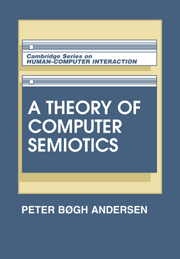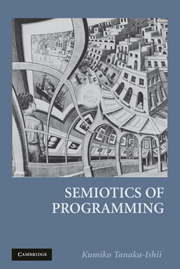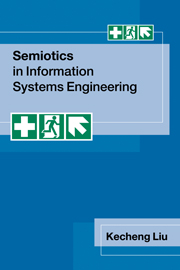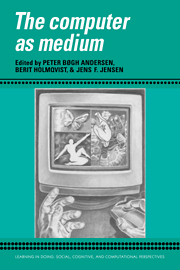A Theory of Computer Semiotics
Semiotics is the science of signs: graphical, such as pictures; verbal (writing or sounds); or others such as body gestures and clothes. Computer semiotics studies the special nature of computer-based signs and how they function in use. This 1991 book is based on ten years of empirical research on computer usage in work situations and contains material from a course taught by the author. It introduces basic traditional semiotic concepts and adapts them so that they become useful for analysing and designing computer systems in their symbolic context of work. It presents a novel approach to the subject, rich in examples, in that it is both theoretically systematic and practical. The author refers to and reinterprets techniques already used so that readers can deepen their understanding. In addition, it offers new techniques and a consistent perspective on computer systems that is particularly appropriate for new hardware and software (e.g. hypermedia) whose main functions are presentation and communication. This is a highly important work whose influence will be wide and longlasting.
- Paperback edition has been revised and updated
- Interdisciplinary interest: computer science, psychology, linguistics, anthropologists concerned with information technology
Product details
March 2011Adobe eBook Reader
9780511878121
0 pages
0kg
This ISBN is for an eBook version which is distributed on our behalf by a third party.
Table of Contents
- Part I. Theory:
- 1. The structuralist heritage
- 2. Adapting and extending structuralist methods
- Part II. Computers: Introduction
- 3. The basic means of expression
- 4. Composite computer-based signs
- Part III. Language, Work and Design: Introduction
- 5. Language as interpretation: semantic fields in the postal giro
- 6. Language as action: language games in the postal giro
- 7. Task analysis: controlling control
- References
- Index.





